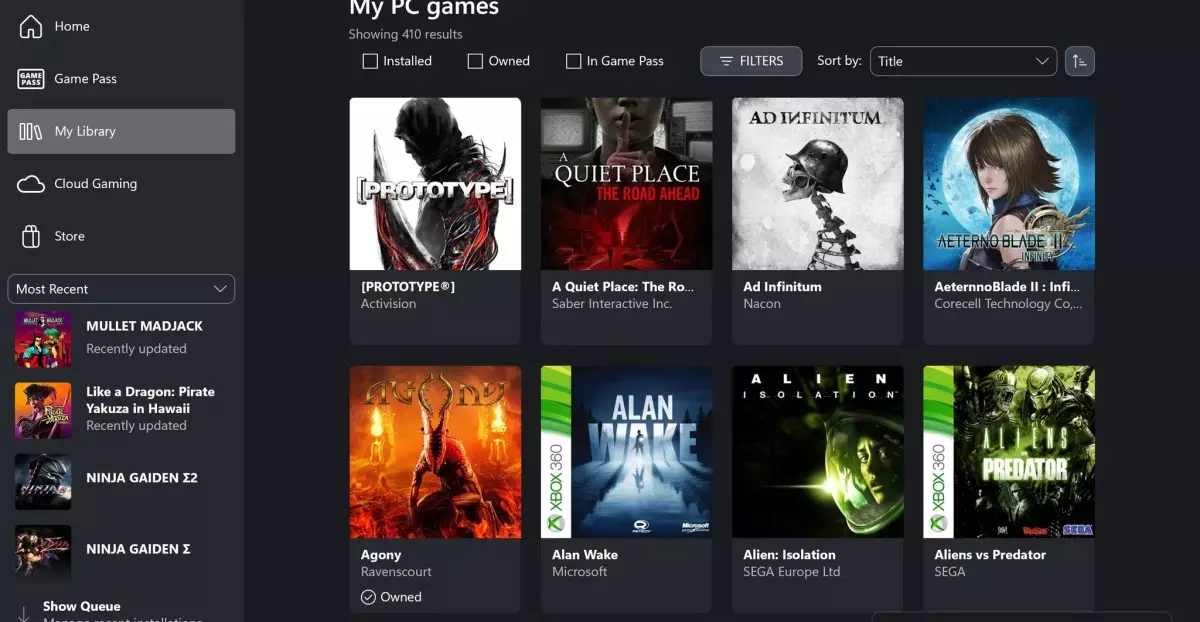Microsoft has been notably vocal about its ambitions to blur the lines between its Xbox gaming platform and the Windows operating system. Recent developments suggest a strategic pivot that aims to align both ecosystems, promising a seamless experience for gamers. This initiative is not just a superficial overhaul; it represents a fundamental rethinking of how games can be accessed, played, and enjoyed across devices. By creating a more integrated gaming experience, Microsoft positions itself to better compete in an ever-evolving market that has seen the rise of diverse gaming platforms.
Early Indicators of Change
The most telling sign of this integration effort is the recent updates to the Xbox app on Windows. Salient features now include displaying Xbox console games alongside PC games in the user’s library. This isn’t mere chance; it signals a larger strategy to unify Xbox and Windows. Although players can’t download games like “Alan Wake” from the Xbox 360, their mere presence in the library suggests Microsoft envisions a universal gaming hub. This strategic choice reflects a deep understanding of gamers’ needs—wanting easy access to all their titles, regardless of platform.
Tom Warren, a seasoned tech journalist and editor, has been closely following these developments. His insights clarify that this is more than a small-scale update — it’s a major initiative to streamline the user experience by making Xbox and Windows feel like two halves of a cohesive whole.
Embracing a Universal Library
The impetus behind these transformative changes lies in Microsoft’s larger vision: a universal library that spans both Xbox and Windows platforms. The partnership with various developers and the exploration of supporting other gaming platforms, such as Steam and the Epic Games Store, highlight Microsoft’s ambition. By bringing these games into the Xbox PC app, Microsoft aims to create a one-stop destination for gamers.
Imagine a world where you have the ability to access not only your installed games but also those from other platforms, creating a more comprehensive gaming ecosystem. This initiative could effectively end the frustration gamers often face when switching between platforms, ensuring that gameplay is not hindered by app and store limitations.
Heralding Change with New Branding
In conjunction with these efforts, Microsoft has opted to rebrand the Xbox PC app simply as “Xbox PC.” This shift in branding serves a purpose beyond aesthetics; it reflects an intention to solidify the app’s identity as the central hub for PC gaming. Strategic branding decisions like these are crucial: they not only help distinguish services in a crowded marketplace but also help in ingraining user loyalty.
Recent marketing materials, including trailers for new games, have consistently highlighted this updated branding. By firmly associating upcoming titles with the Xbox name, Microsoft demonstrates its commitment to making this transition more than just a technical adjustment but also a cultural one.
Challenges and Opportunities Ahead
Yet, even with these promising updates, Microsoft faces significant hurdles. The competitive landscape is riddled with formidable opponents, including the likes of SteamOS and other handheld gaming devices. If Microsoft is to remain relevant in this space, its integration strategy must include groundbreaking solutions such as cloud gaming or innovative emulation technology to allow the playability of older Xbox titles on PCs.
The ambition to make console games operable on PC can be transformative, propelling Microsoft to the forefront of the gaming industry. However, this an area fraught with potential pitfalls. Gamers are savvy; they will not settle for half-measures or marketing fluff disguised as real innovation. Thus, Microsoft must ensure that any new features brought to market deliver on the promises made.
This evolving narrative is far from over. With all the pieces moving into place, the gaming community is left to speculate: will Microsoft succeed in its mission to create a cohesive gaming ecosystem, and if so, what will that landscape look like? Only time will tell, but one thing remains clear: the drive for integration could make Microsoft a game-changer, not just in name, but in the essence of gaming itself.

